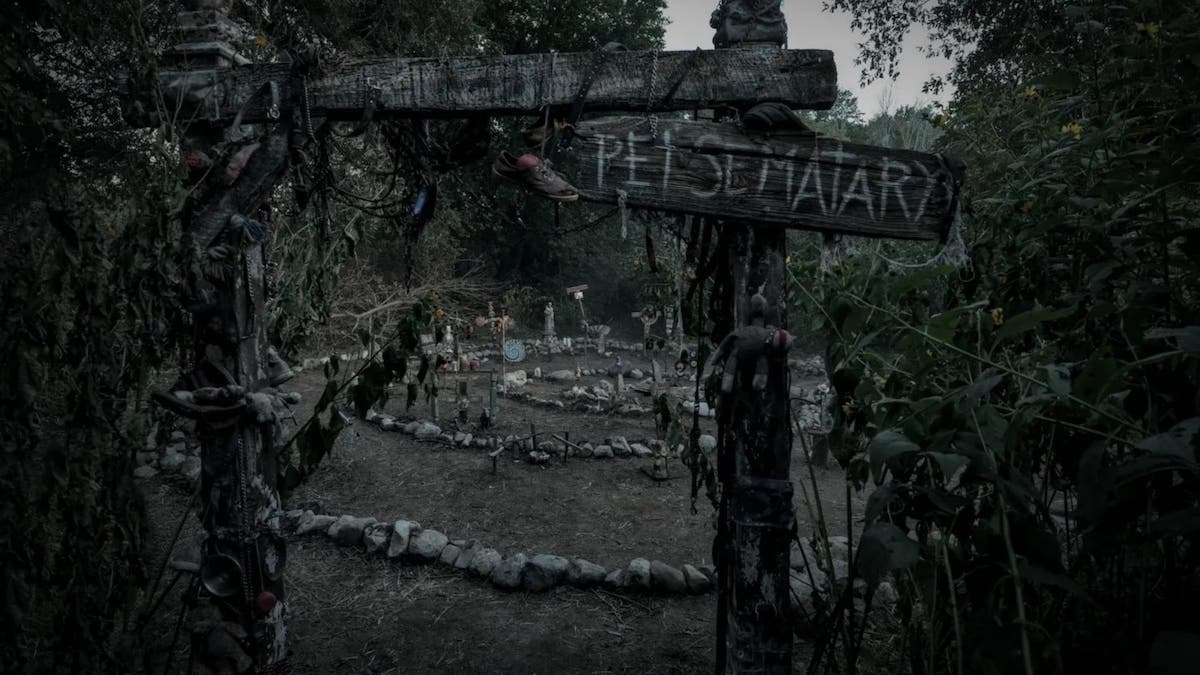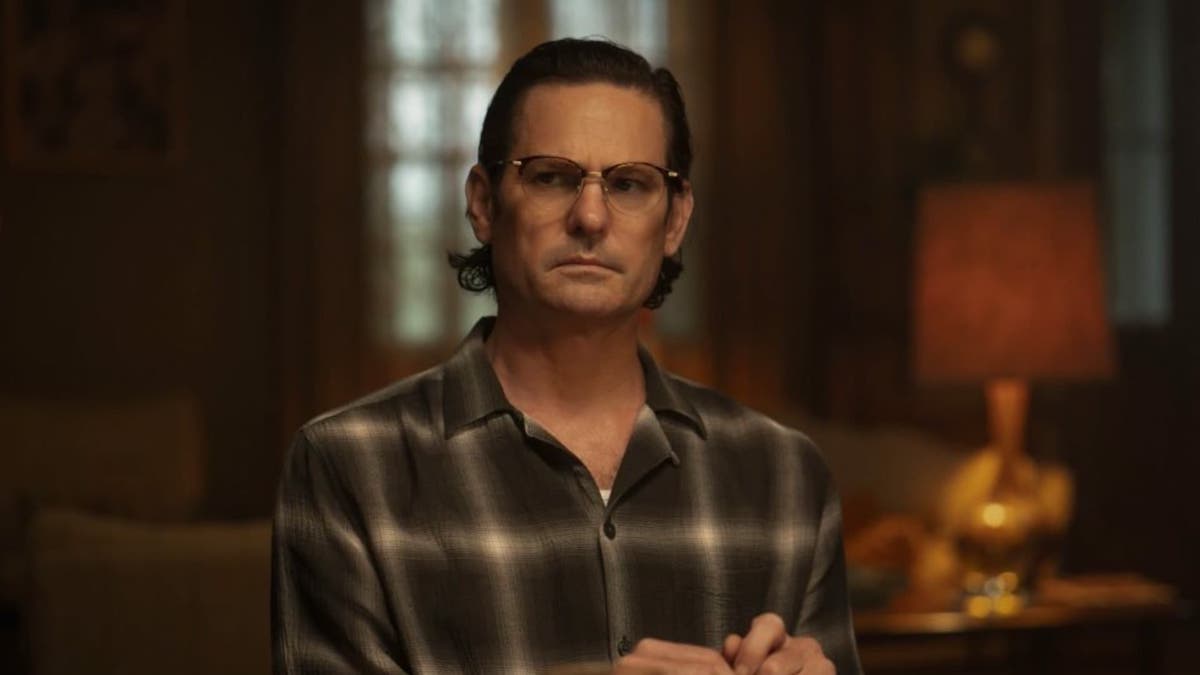PET SEMATARY: BLOODLINES (2023)
In the late-1960s, a young Jud Crandall discovers the horrifying secret of the Pet Sematary...

In the late-1960s, a young Jud Crandall discovers the horrifying secret of the Pet Sematary...


Screenwriter Jeff Buhler and producer Lorenzo di Bonaventura (who brought us 2019’s version of Stephen King’s Pet Sematary) team up with first-time director Lindsey Anderson Beer for this prequel. But whereas the 2019 movie had some merits (e.g. the performance of John Lithgow as Jud Crandall), even if it didn’t live up to the standard set by its 1989 predecessor, it’s difficult to discern a point to this latest film.
A lot of the acting is persuasive but the two supposedly central characters are undeveloped, and although the cinematography is often impactful and Beer’s direction is competent, everything’s let down by a script that fails in terms of logic and structure.
King’s novel is one of his more thematically profound, addressing the self-destructive depths we can be led to if we allow love for another person to dominate our behaviour completely. It touches at least implicitly on addiction, too (something that’s featured in King’s personal life, and it may be no coincidence that one actor who speaks of it here—Henry Thomas—somewhat resembles King).
It deals with the apparent conflicts between European rationalism and the beliefs of other cultures, encapsulated in an American doctor’s slow acceptance that an old Indian burial ground in a small Maine town really can bring the dead back to life. It also, like much of King’s best work (It, The Shining), portrays evil as something suffusing a specific place.

Pet Sematary: Bloodlines necessarily dispenses with some of this because—unlike in both previous versions of Pet Sematary—its central character doesn’t up enlisting the dark magic of the Indian cemetery himself. Instead, he’s an observer: a young Jud Crandall (Jackson White), who appeared as a much older man in the other movies (Lithgow in 2019, Fred Gwynne in 1989).
Essentially, it’s an adaptation, with some additions, of Chapter 39 (and a few other fragments) of the source novel: the story of Timmy Baterman, a soldier killed in combat whose father revivifies his corpse in the cemetery. In the novel, this incident is recalled by the older Jud and took place in the 1940s, when Jud was in his forties, but now it’s been moved forward to the late-1960s and Timmy died in Vietnam rather than World War II, meaning Jud is 20 or so. Presumably, this is to align the timeline with the second version of Pet Sematary, thus making Jud an elderly but not impossibly old man in 2019.
The movie gets straight to business with a scene of Baterman’s father (David Duchovny) dragging his son’s body through the woods. (Oddly enough the second movie I’ve reviewed recently with a corpse-dragging opening.) We then meet Jud and his girlfriend Norma (Natalie Alyn Lind), the former having managed to avoid the draft and now they’re both leaving to join the Peace Corps. Jud’s father Dan (Thomas) is insistent his son should get away from the town of Ludlow, although it’s not yet made clear why he feels so strongly about this.
Soon after Jud and Norma have embarked on their drive, they encounter Timmy’s dog behaving strangely, and then Timmy himself (Jack Mulhern), for whom “strange” doesn’t begin to cover it. In a different film, we might imagine this young Vietnam vet was suffering from PTSD, and indeed that’s the conclusion Jud and Norma reach, but after unexpected circumstances force them to remain in town for a while they uncover a more macabre explanation with the help of Jud’s friend Manny (Forrest Goodluck) and his sister Donna (Isabella Star LaBlanc).
Several of these characters are rendered well, notably Goodluck’s Manny (gentler than his blistering-hot domestic terrorist in How to Blow Up a Pipeline) and LaBlanc’s Donna (who, in a nice touch, makes animal masks similar to those the movies show being used by kids at the pet cemetery).

Mulhern’s Timmy can be chilling with his flat tone (“like he wasn’t there or something,” says Jud), his gawping at the sun, and the eeriest lines in a mostly distinctly unscary film (“Am I home? I don’t know”—the implication being that perhaps the grave, not his dad’s house, is his real home now). At times, however, the script overdoes the threat he poses (“kill ’em all before they kill you”) with the result it can seem Timmy himself, rather than the horrible transformations the cemetery wreaks on those it brings alive, is the core of the problem.
Duchovny’s angry grief as Timmy’s father is convincing: initially seeming like a stereotypical, rather weak middle-class father, he later reveals himself as a man who has (along with a few others in the community) dedicated himself to containing the horrors of the cemetery.
Much less satisfying, unfortunately, is Lind as Jud’s characterless girlfriend and White as Jud himself, who suffers from being (like the protagonist Creed in the other movies) essentially passive. Even when Jud and his contemporaries randomly stumble upon the secret of the cemetery and unconvincingly decide to do something about Timmy there’s little sense, as there is with his father, that he’s a man with a mission. Indeed, a film about the older Crandall and those others who’ve been fighting the same fight for a long time (a postal worker played by Pam Grier, the mayor played by Matt Holland) might have been a more interesting one.
Visually, Pet Sematary is above average with some original shots from director Beer and cinematographer Benjamin Kirk Nielsen lifting the atmosphere of mist, darkness, and earth tones. The period details of the late-’60s setting are nicely handled without being overdone, and Brandon Roberts’s music is complemented by a well-chosen selection of more or less era-appropriate songs. Particularly ominous is Creedence Clearwater Revival’s “Bad Moon Rising”, released at the precise time the film is set.
It’s the writing that lets down Pet Sematary: Bloodlines. Certainly, there’s no shortage of ideas here: repeated references to trucks speeding down a local road, clearly referring to a major event in the novel and other films, implying that history repeats itself in Ludlow under the influence of the Indian cemetery. There’s one great gag on the much-quoted line “sometimes dead is better”, and more seriously, the secret, successful efforts of Jud’s father to keep his son out of the Vietnam draft are pointedly in contrast to the way that Timmy’s father tries to undo his son’s death there.

This class perspective on small-town America is barely explored, though, and nor is much else. For example, the possibility that efforts by Jud’s father and the other older adults to “keep it from spreading” are themselves similar to America’s anti-Communist mission in Vietnam, or the way a memorial to fallen soldiers in a local church, reading “your deeds live on”, suggests another approach to life after death.
Omitting to follow these up any further is only a mild disappointment, however, compared with the script’s bigger shortcomings. A hospital sequence toward the end simply doesn’t make sense because it doesn’t seem plausible nobody else would know Timmy’s father had received his son’s body; an unnecessary flashback to Ludlow in the 17th-century carries something of a Horrible Histories air; and, most damagingly, the way that Jud, Manny, and the other young people become involved with the burial ground is jarringly clumsy.
Their decision seems inexplicably abrupt, almost as if a substantial part had been cut from the film, and an enormous info-dump from a journal conveniently found by a local priest feels like a desperate effort to keep the runtime down. The movie hurtles toward a final confrontation, rather than building up interest through suspense and revelation. There’s no real plot in the sense of challenges, setbacks, and complications.
Pet Sematary: Bloodlines thus consists of a mystery (not very mysterious to the audience in the first place, given the existence of the novel and the other films), a sudden explanation of that mystery, a rather tedious last-act resolution of the problem it has created… and nothing more. Creditable acting and production aren’t enough to save it from this fundamental dramatic weakness, and the result is a far less absorbing film than either of its predecessors, let alone King’s work.
“Most of us only get one life,” says Jud’s father. This franchise may have had too many already.
USA | 2023 | 87 MINUTES | 2.39:1 | COLOUR | ENGLISH


director: Lindsey Anderson Beer.
writer: Lindsey Anderson Beer & Jeff Buhler (based on the novel by Stephen King).
starring: Jackson White, Natalie Alyn Lind, Forrest Goodluck, Isabella Star LaBlanc & Henry Thomas.
